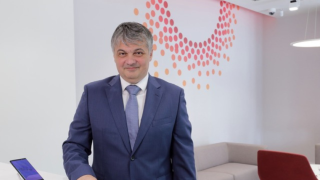Nokia’s head of corporate partnerships, Jane Rygaard notes that for years, she has often been the only woman in the room, and this is something that must change moving forward.
Speaking to Capacity at Mobile World Congress (MWC) 2024, Rygaard says she has seen some positive change over the past few years.
“Firstly, I do believe we’re getting more diversity in all aspects and not only in gender.
“But we’re probably missing out on age diversity given the amount of people at this event with grey hair!” Rygaard laughs.
Rygaard believes it takes a simple shift in order to attract more emerging talent to the tech and telecoms industries, which she admits can sometimes be viewed as a “boring” one for outsiders.
“If we talk about what technology is used for, it makes it 10 times more interesting,” she says.
“We need to explain how it is helping.”
As issues such as sustainability and the transition into greener technology come to the forefront, Rygaard believes there will be greater interest from women to venture into the industry, but that’s not to say that women cannot be interested in the more technological aspects of the industry either.
Rygaard tells a story of visiting her daughter’s classroom to discuss coding and robotics but found only a few girls present.
“Where are all of the girls?” Rygaard asked the teacher.
“We thought it wouldn’t be interesting for them,” the teacher responded.
That, according to Rygaard, is part of the problem and she believes it is up to parents to both challenge and change these stereotypes.
“It isn’t going to change overnight, but I do believe it is key that we talk about what technology can be used for – that will interest a lot of young girls because they’re just as curious as anyone else.”
While we as an industry are on the right track, Rygaard believes that diversity is key to the development of technology moving forward. She provides AI as an example, noting that if AI systems are only fed with one type of data, they will inevitably begin to produce biased information.
It is therefore essential that diverse teams are behind the development of newer technologies – “and that’s not just diversity in gender but in everything else”.
The key topics
At MWC the two key topics that undoubtedly dominated the agenda were 5G-advanced and AI.
5G-advanced refers to the next evolutionary step in 5G technology and it is set to bring a new level of enhanced capabilities beyond connectivity in order to enable a wider set of advanced use cases for verticals.
It will support advanced applications with enhanced mobility and high reliability as well as AI and machine learning (ML) that will improve network performance.
According to Rygaard, while it is certainly the right time to think about advanced 5G, we’re not completely halfway into 5G’s lifespan just yet.
“I would say we are about 40% of the way there,” she says.
Rygaard believes that most of the developments around 5G are related to the non-consumer parts, but the fact that we are now seeing real deployments with 5G Standalone core that enables network slicing and ultra-low latency is a testament to how far the technology has come.
“That has been dependent on the fact that we need 5G Standalone core because you can’t do the other things before that,” she says.
Regarding the future of 5G, Rygaard believes there will be a mix of things consumers can see and things they will not.
“That is newer use cases, but it is very much visible in the back end.”
Rygaard says that while consumers are mostly getting what they need, they are not seeing the work Nokia is doing around smart manufacturing and drone networks – and that is very much ongoing.
Industry 4.0 and 5G factory automation are bringing a plethora of opportunities to the sector. In a 2022 survey of more than 1,000 manufacturers by ABI Research and Nokia, 90% are considering 4G/5G private wireless technologies to improve the flexibility and agility of their operations.
Meanwhile, Nokia’s Drone Networks are powered by public and private 4G/LTE and is an end-to-end solution comprising of Nokia drones. The solution enables the use of multiple drones to fly on automated individual missions steered from a single ground control station, running on the edge cloud.
The development of AI
On the AI front, Nokia is working with Nvidia to revolutionise the future of AI-ready radio access network solutions.
The collaboration, which further enhances Nokia’s anyRAN approach, aims to show that AI is fundamental to transforming the future of Nokia's telecommunications network business.
According to Rygaard, AI has the potential to aid enterprises in sustainability and performance and it has the scope to transcend beyond the language models that hit the mainstream following the widespread popularity of ChatGPT.
“We must ensure not to use [AI] for the sake of using it,” she says.
And using the technology responsibly is also an issue that remains key.
Yet Rygaard believes that while conversations surrounding AI and its future take place, a lot of what we are seeing with regard to AI is an evolution of algorithms that already exist.
“What we need to be aware of is that there is a big difference between using AI technology in a technical environment and using AI for article writing [as an example],” Rygaard says.
“I think we need to be responsible in both places, but there is a difference, and we shouldn’t be scared of using AI in technology terms.”
For Rygaard, one of the biggest themes around AI is ensuring that it will be as sustainable as possible for as many people as possible.






